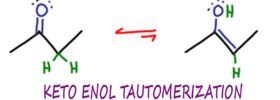 This video picks up from Part 3 where we discussed adding and subtracting vectors when facing in the same and opposite directions.
This video picks up from Part 3 where we discussed adding and subtracting vectors when facing in the same and opposite directions.
But the MCAT is designed to be tricky, and so you will likely find yourself faced with a problem combining vectors at some odd angle off the x-axis or y-axis.
This video shows you a simple method for adding and subtracting these tricky vectors using their vector components along with the Pythagorean Theorem.
Translational Motion 4 – Adding 2-Dimensional Vectors
(Watch on YouTube: Add and Subtract Angled Vectors. Click cc on the bottom right for video transcription.)
<– Watch Previous Video: Adding and Subtracting Vectors
–> Watch Next Video: Velocity and Speed
This is Video 4 in my series on Translational Motion in MCAT Physics. Click HERE for the entire series



Hi Leah, in the Q with the 45° and 30° angle, does it matter if your triangles are facing the same direction? It says “northwest” for the 2nd part of the Q but doesn’t specify what direction the triangle points (meaning what side of the X axis it’s on). Also it would be helpful for us to have an option to upload a photo or draw a diagram in the comments to better clarify any question!
Why couldn’t we just use 31^2+59^2? That would give us the hypotenuse and thus the displacement of both of the vectors drawn.
Thanks Leah for this tutorial video. In this question I used the angle of 30 degrees, not 60 degrees, and the final answer was R= 73.85 m. Do you think my method is correct?
In the task featuring a running dog shouldn’t y2 be negative since R2 is in the negative directon?